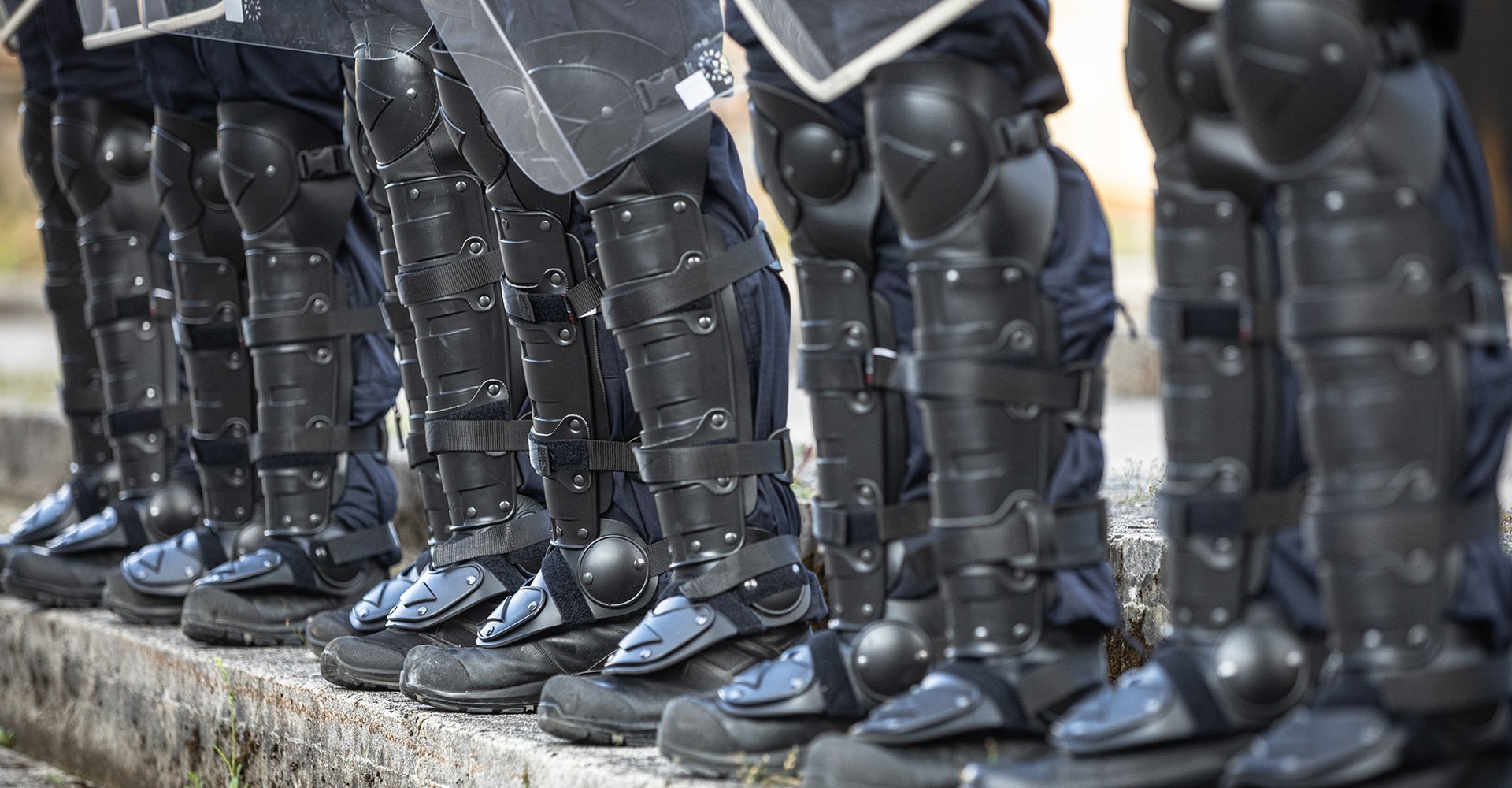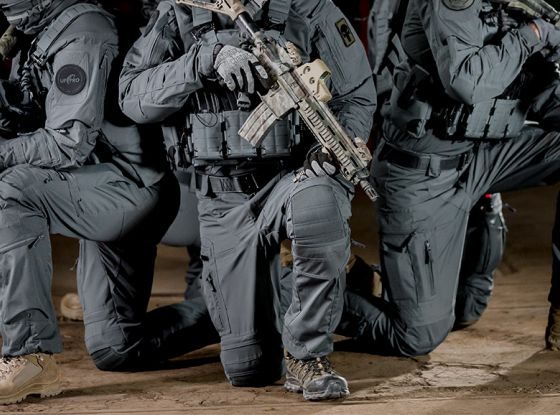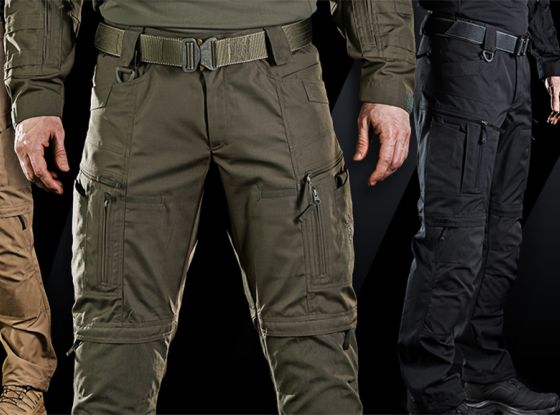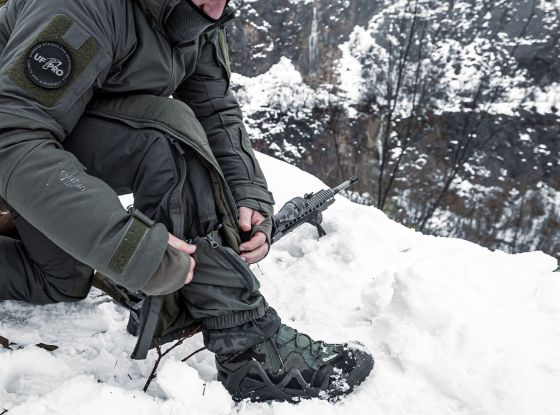The phrase bulletproof pants sounds like something pulled straight from a sci-fi script — futuristic, tactical, and ready for anything. It’s no wonder the idea keeps popping up in conversations about tactical gear. After all, we’ve got bulletproof vests, helmets, shields… why not pants?
In this blog post:
But here’s the reality: bulletproof pants aren’t part of standard-issue gear, and that’s not because no one’s thought of it. It’s because making your lower half bullet-resistant comes with real trade-offs. Weight. Flexibility. Breathability. Movement. The very things combat pants are designed to support would be the first things to suffer.
So the better question isn’t “Why don’t we have bulletproof pants?” It’s “What should tactical pants really be built to do?”
What Bulletproof Actually Means, and What It Doesn’t
Let’s get one thing clear: bulletproof is a marketing word, not a technical one. In real-world applications, nothing is truly bulletproof. There’s only bullet-resistant to a certain level. More on how performance is measured can be found in Mehler Protection’s article on protective elements and standards in ballistic protection.
Ballistic materials like Kevlar®, Dyneema®, or UHMWPE can stop projectiles, but they add bulk, stiffness, and heat retention. Over time, these materials have advanced into composites and ceramics used in vests and plates, as explained in Mehler Protection’s blog on the evolution of body armour.
These materials are common in ballistic vests, helmets, and inserts because those areas protect vital organs. But legs? They’re not considered priority zones in most ballistic protection strategies.
Trying to line an entire pair of pants with ballistic fibers would significantly impact mobility, airflow, and comfort. And let’s not forget: to actually stop a high-velocity round, you’d need serious layering. The kind that makes a tactical pant more of a walking armor plate than a functional piece of gear.
And in most mission profiles, that’s simply not worth the trade.
SUBSCRIBE TO UNLOCK OUR EXCLUSIVE CONTENT
Enter your email and get timely updates and relevant intel on tactical topics directly to your inbox.
You are signing up to receive updates via e-mail from which you can opt out at any time. Visit our privacy policy for more info.
Key Reasons Why Bulletproof Pants Aren’t Standard Tactical Gear
When it comes to real-world tactical gear, function always beats fantasy. And while bulletproof pants may sound like a smart upgrade, they don’t align with how tactical operations work or what gear actually needs to do.
1. They Restrict Mobility
Ballistic fabrics are stiff, heavy, and multi-layered. While they offer protection, they also reduce flexibility in the hips and knees — making it harder to sprint, climb, kneel, or crawl. For tactical units that rely on speed and fluid movement, this is a critical disadvantage.
2. They Add Unnecessary Weight
Every piece of gear adds to the total weight an operator carries. Bulletproof materials in pants can significantly increase fatigue over time, especially during extended missions. Tactical loadouts are already demanding, and adding weight to the legs disrupts efficient movement.
3. They Create Heat and Discomfort
Ballistic materials don’t breathe well. Encasing the legs in these fabrics traps heat and moisture, leading to overheating, discomfort, and potential issues with long-term wear in hot or humid conditions.
4. They Don’t Protect Critical Organs
Body armor is designed to protect vital organs - lungs, heart, brain - where hits are most likely to be fatal. Legs, while still vulnerable, are statistically lower priority for ballistic coverage. Most injuries to the lower body can be mitigated with training, mobility, and fast extraction.
5. They’re Not Mission-Adaptable
Tactical pants need to serve a variety of environments: urban, rural, desert, and forest. Bulletproof pants are highly specialized and only make sense in extremely specific threat profiles (e.g., bomb disposal, riot control). That’s why lower-body protection is better delivered as modular overgear, not built-in.
6. The Trade-Off Isn’t Worth It
Ultimately, the protection-to-performance ratio doesn’t balance out. Bulletproof pants make sense in theory, but on the ground, in real-world operations, they compromise more than they contribute.
The Real Demands on Combat Pants
Just because combat pants aren’t bulletproof doesn’t mean they’re fragile. Far from it.
Modern tactical pants can take a beating. From rocky terrain and shattered glass to sharp metal edges and unpredictable weather. They’re expected to hold up, day after day, without compromising comfort or function.
That’s why quality combat pants focus on abrasion resistance, articulated design, knee protection, and smart material placement. It’s not about over-engineering; it’s about balancing durability and wearability.
Want to dive deeper into what really defines tough combat pants? Check out our breakdown here: Are Your Combat Pants Built for Abuse?
If Lower Body Protection Is Needed, Here’s How It’s Done
Of course, there are scenarios where extra leg protection makes sense. Think EOD missions, riot control, or breaching environments with blast risk. But in those cases, the protection doesn’t come built into your pants. It’s modular.
One option is specialized riot gear systems, which often include reinforced thigh and shin components. These are designed for scenarios where operators face projectiles, blunt force, or close-quarters threats and need durable protection without losing mobility.
Another is overpants with integrated ballistic panels or shrapnel-resistant gaiters, which can be pulled on over standard combat pants when the mission calls for added coverage against fragmentation or low-caliber threats.
For advanced use cases, there are systems like the ExoM exoskeleton. Originally developed with special forces, ExoM combines ballistic protection with strength-assisting load distribution, reducing fatigue while shielding operators in extreme environments.
This modular approach ensures that operators can adapt to specific mission threats without carrying unnecessary weight, heat, or stiffness in every scenario.
The bottom line: lower-body protection is situational, not standard.
Pants Are Built to Last, Not to Stop Bullets
The true strength of tactical pants lies in how long they last and not in whether they can stop a round of bullets.
Materials like CORDURA®, ripstop blends, and stretch panels help combat pants endure extreme use. But even the best materials will fail if you don’t take care of them. Washing improperly, ignoring damage, or storing pants wet can cut their lifespan dramatically.
Maintenance is key. Reinforce stress points, follow care instructions, and rotate pairs to avoid overuse.
For tips on making your pants go the distance, take a look at this guide: Maximizing Combat Pants Lifespan
Conclusion
Bulletproof pants sound like the next logical evolution in tactical gear. But in reality, they solve a problem that doesn’t exist in most operational environments. What they take away in mobility, comfort, and adaptability simply outweighs what they offer in protection.
Standard-issue combat pants aren’t designed to stop bullets. They’re designed to move with you, endure abuse, and perform under pressure, all while keeping weight low and flexibility high. And when lower-body protection is actually needed, modular solutions exist that won’t compromise your gear setup every other day of the year.
So the next time someone asks, “Why aren’t bulletproof pants a thing?” Remind them: protection means nothing if you can’t move when it matters.




